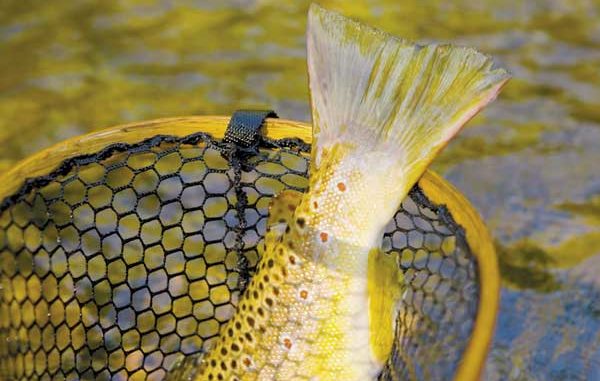
In the world in which we live, with dwindling natural resources and new environmental threats to our fisheries appearing almost every day, practicing catch-and-release is a better idea than ever.Forty or 50 years ago, the numbers of fish in our rivers, lakes, and oceans must have seemed infinite to anglers and sportsmen, but these are different times. In order to protect the resources we have, we must begin to put back what we take. Practicing catch-and-release is a small step towards establishing sustainable fisheries for the future.
Keeping and eating your catch is certainly not a sin. But if you choose to keep the occasional fish for a campfire dinner or the day’s supper table, keep only what you absolutely need. By getting into the habit of releasing what you catch, you soon will learn the joys of seeing that beautiful bass, trout, or crappie swim away — knowing he’ll be there to catch some other day.
Eating fish can be a joy, but there are many dimensions of happiness when it comes to the sport of fishing.
Here are some tips to help practice good catch-and-release habits.
Plan ahead
The best way to ensure that your fish survives a catch-and-release experience is to plan for the release before the fish is ever caught.
Here are some steps you can take before the cast that will better help the fish survive.
* Use fishing tackle that is heavy enough to land the fish quickly. Landing a 5-pound bass on ultralight spinning gear and light line may seem like a sporting thing to do, but you are endangering the fish’s life if you are planning to release it.
The longer it takes to land a fish, the more stress it experiences. Fish build up lactic acid in their muscles. It takes a few days for a fish to break down the lactic acid that builds up from being caught and released. By landing the fish as quickly as possible, you increase its odds for survival.
* When given a choice, use artificial lures and flies rather than live bait. Live bait is often swallowed or taken deep in the mouth, greatly diminishing any chance for the catch’s survival.
* Use barbless hooks. Bend or pinch down the barbs on both your single and treble hooks to make removing them from the fish’s mouth easier and quicker. Every second the fish is out of the water, the more likely the fish will die.
* Avoid stainless steel hooks. In the event you hook a fish deeply, the best course of action is always cutting the line rather than trying to rip it out. Stainless steel hooks don’t rust out like normal hooks.
After the catch
When you have hooked a fish and have it to the boat or at your feet, here are a few tips on landing and handling the fish to help ensure fish survival.
* If you use a net to land your fish, use one made of soft mesh or rubber rather than nylon or the knotted types. Knotted or nylon nets can remove scales and damage the fish’s eye tissue.
When netting the fish, try keeping both the net and fish in the water while removing the hook.
* Wet your hands before handling the fish. Fish have a protective slime that dry hands, the riverbank, or the boat deck will remove from the fish’s body.
* Don’t grab or squeeze a fish too forcefully while holding it. Bass should held by the bottom lip and trout cradled gently under the belly. Again, keep them in the water if possible. If you need to take a picture, have the camera ready before lifting the fish out of the water to minimize the amount of time the fish is out of the water.
* When releasing a fish, do not throw or drop the fish back into the water. Hold the fish under the belly and keep it upright. Keep its head pointed away from the side of the boat or anything else it might hit as it swims away. In moving water, face the fish upstream into the current and let the fish swim away under its own power.
During warm weather or high water temperatures, all of this advice is even more critical.
Conserving our fishery resources and practicing catch-and-release makes good sense. Not only does it help ensure good fishing for the rest of our lifetimes, but it also goes a long way towards making sure there are fish for future generations as well.
Remember the words of the late, great fishing pioneer, Lee Wulff: “A good gamefish is too valuable to catch only once.”



Be the first to comment